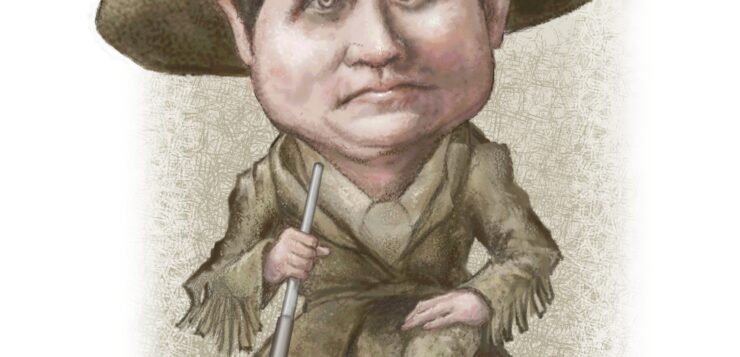 Calamity: The Many Lives of Calamity Jane
Calamity: The Many Lives of Calamity Jane
by Karen R. Jones
Yale University Press. 303 pages, $28.
WHEN ONE THINKS of famous women of the Wild West, the list is fairly short, but Calamity Jane is likely to be among the top names that come to mind. In Karen R. Jones’ exhaustive and provocative biography, it becomes abundantly clear why her subject is so well known. Calamity Jane was a legend in her own time: a tall-tale-telling, gun-toting, danger-loving western woman, a friend of Wild Bill Hickok, and a performer in Wild West shows in her later life. And yet, there are holes in this iconic story.
Born on May 1, 1852—or was it in 1856, as recorded in some documents?—Martha Jane Canary was the first child of a Missouri “gambler and a ‘woman of the lowest grade,’” writes author Jones. Canary’s father seems to have tried, at least at first, to maintain a small amount of respectability, but his wife was a “firebrand” who liked to drink, cuss, and wear “gaudy dress.” Jones says that for this and various other, similarly eccentric patterns of behavior, the whole family was the subject of gossip for the locals, some of whom claimed to have remembered them decades later, long after the Canarys had left Missouri to try their luck in Montana.
 At the time of her parents’ death, Canary was a teenager, or nearly so, depending on the birth year that one accepts. As she does throughout this book as a point of reference, Jones describes what life was like for citizens of the Old West in general and what it might have been like for a young, single female thrown into destitution. In this case, Canary did literally whatever was necessary to survive. She never stayed in one town or on one ranch for long, adapting to a “pathologically itinerant lifestyle” such that she seemed content to continue moving from place to place for the rest of her life. Jones indicates that while the source of Canary’s famous nickname is unknown, it may well have come from the fact that “calamity” followed her from the moment she was born.
At the time of her parents’ death, Canary was a teenager, or nearly so, depending on the birth year that one accepts. As she does throughout this book as a point of reference, Jones describes what life was like for citizens of the Old West in general and what it might have been like for a young, single female thrown into destitution. In this case, Canary did literally whatever was necessary to survive. She never stayed in one town or on one ranch for long, adapting to a “pathologically itinerant lifestyle” such that she seemed content to continue moving from place to place for the rest of her life. Jones indicates that while the source of Canary’s famous nickname is unknown, it may well have come from the fact that “calamity” followed her from the moment she was born.
It may be no coincidence, then, that “calamity” best describes Canary’s known story, sketchy and fragmented though it is. One of Canary’s biggest boasts was that she was a “female scout” and worked closely with General George Armstrong Custer, but that appears to have been a tall tale. Canary likewise claimed that she was a stagecoach driver and Pony Express rider, but those stories, too, never matched up with the known facts. Canary herself told many of the tales, while writers through the decades perpetuated sometimes outrageous legends to manufacture a better story.
One thing we do know is that—while it was not uncommon for women to wear men’s clothing as a matter of convenience during the settling of the West—Canary took this practice to a new level choosing to do so most of the time. As far back as her teens or early adulthood, she would dress as a man whenever it suited her—though she did revert to women’s garb later in life, especially when it was in her interest to do so. Indeed her cross-dressing ways were the source of scandal and gossip from her peers and neighbors, and they were the occasion for more than one newspaper headline. Jones points out that Canary’s choice of clothing and her masculinized persona raise the question of whether she would have adopted a transgender identity if she were alive today. To further complicate things, Canary married two men and was supposedly the mother of two children. Jones notes that at least one TV series (Deadwood) portrayed Canary as a lesbian.
So, was Calamity Jane a lesbian, or what we would call gender fluid, or something else altogether? In light of all the other tall tales and outright lies that were perpetuated by and about her, that question may never be answered.
Terri Schlichenmeyer is a freelance writer based in Wisconsin.







